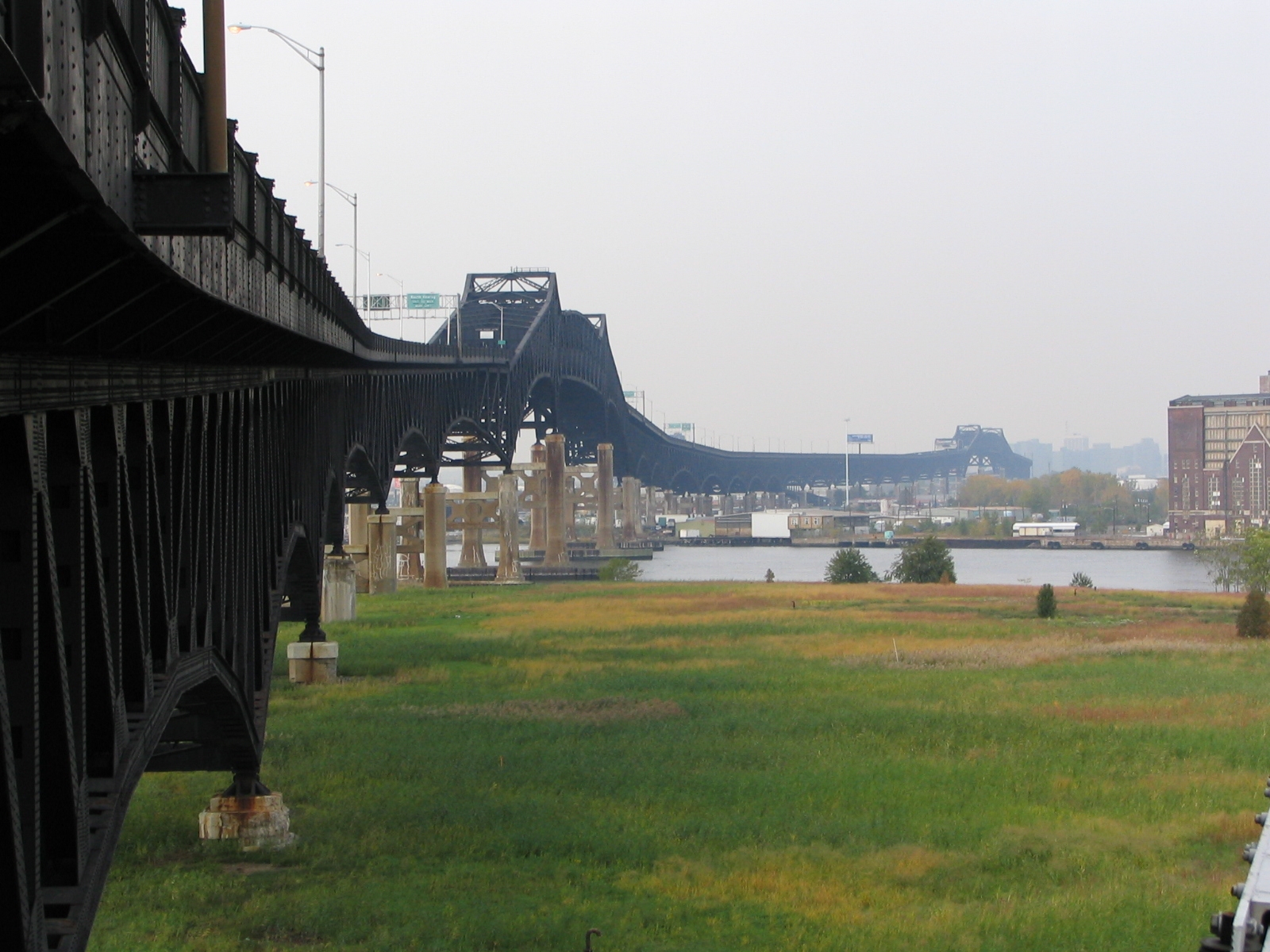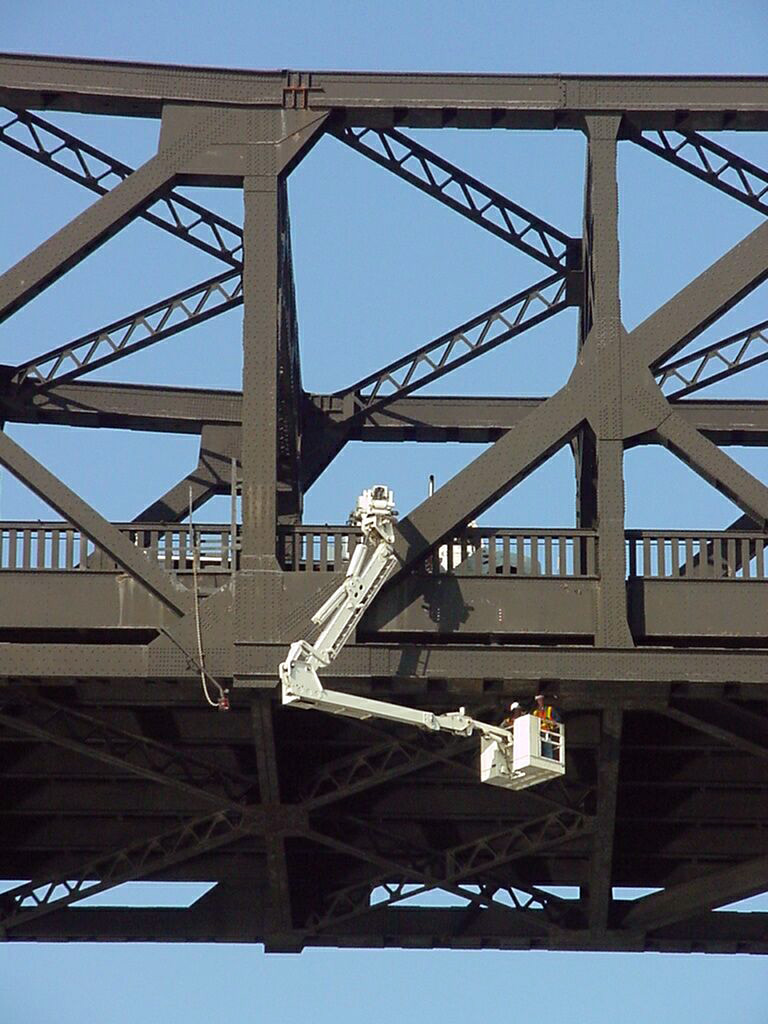Project Type: Bridge Inspection
Inspection of Pulaski Skyway Structures
Newark and Kearny, New Jersey
The Pulaski Skyway, carrying U.S. Routes 1 & 9, is an historic 3.5-mile long viaduct crossing the New Jersey Turnpike, the Passaic and Hackensack Rivers, Conrail, PATH, and numerous local streets and businesses. This Gateway structure was built in 1932 to funnel Holland Tunnel traffic in to and out of New York City over the industrial heartland of Jersey City and Kearny toward Newark and critical NJ State highways. It consists of multiple structure types including deck trusses and through trusses (which accommodate a 120-foot high navigable shipping channel), through girder and floorbeam spans, multi-stringer steel spans and concrete encased steel stringer spans. The total structure length, including five ramps, is 21,974 feet.
Arora and Associates, P.C. was selected by the New Jersey Department of Transportation to conduct the 11th Cycle Biennial Inspection for the Skyway. Arora also conducted the next 5 cycles of biennial inspections. The complicated nature of the structure requires the use of specialized access equipment including UB-60 and UB-30 Aspen Aerial underbridge inspection vehicles, 110’ man-lifts, and 35’ and 55’ bucket trucks. Coordination with Conrail and PATH is also required for Right of Entry permits and flagmen. The field teams coordinate daily lane closures with NJDOT Traffic Operations North to ensure that our work does not interfere with this critical highway. Additional coordination is required with three different city police forces, the State Police Construction Unit, and various private property owners, including sensitive industrial and security sites.
Arora’s fieldwork includes the “hands-on” inspection of fracture critical details including ramp hangers, structural pins and truss components. The inspection of the piers and fender systems in the Hackensack and Passaic Rivers includes the use of underwater inspection sub-consultants. Arora also coordinates the non-destructive ultrasonic testing of the truss pins on alternating cycles.
Due to the size and complexity of the structure and its accompanying bridge inspection reports, Arora has implemented unique methods of reporting and clarifying Priority Repairs, defect locations and severity, and other associated data for the bridge. Arora’s inspection findings have been used to identify needed Emergency and Priority Repairs, aid in the identification and prioritization of task order repair work, and been used to support an on-going major rehabilitation study.





